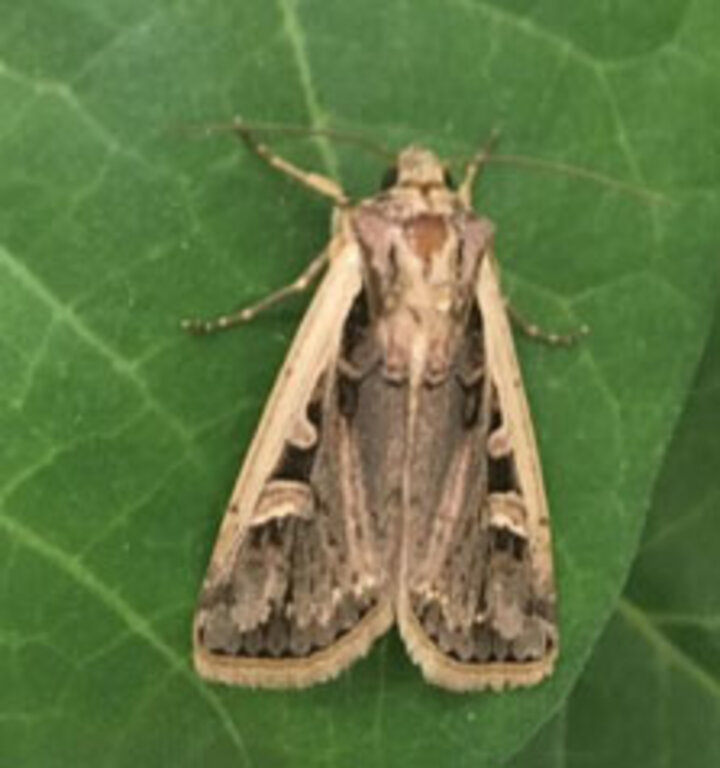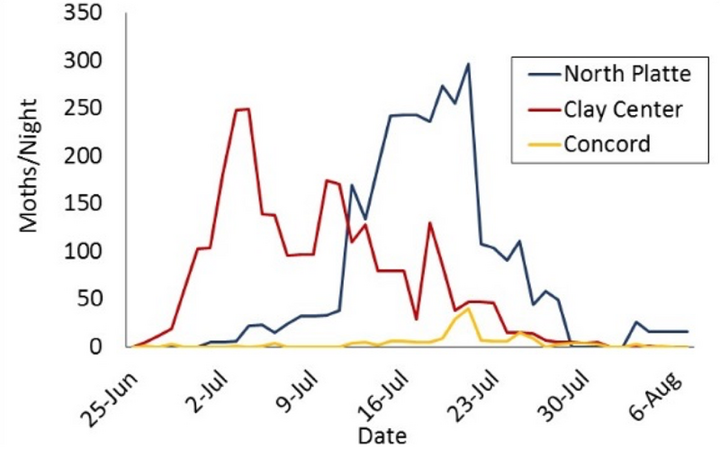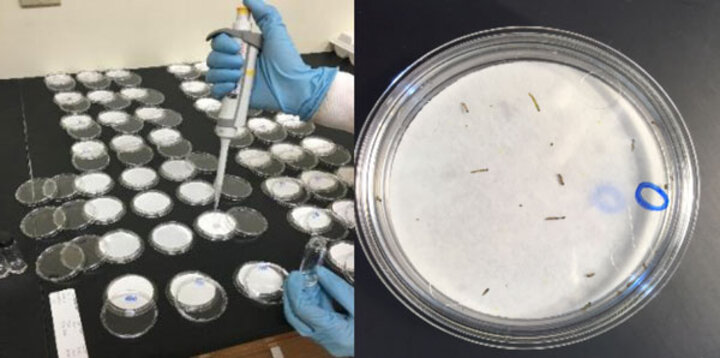
In 2017, the western bean cutworm (WBC, Figure 1) was once again a major pest in corn and dry bean production for most of Nebraska. WBC continues to expand its range and was reported for the first time in 2017 as far east as Maryland and Nova Scotia, Canada.
Figure 2 shows moth flights at three Nebraska sites in 2017. Beginning in the eastern Platte River Valley, with black light trap catches at Clay Center peaking with 249 moths/night on July 4. Trap catches were the highest of the three sites at North Platte, where they peaked with 297 moths/night on July 21. Numbers in Concord were comparably low.
Based on anecdotal reports of lower than expected performance of pyrethroid insecticides, we have conducted bioassays to test the susceptibility of WBC larvae to the active ingredient bifenthrin (Figure 3). Results from 2016-2017 indicate that populations of WBC from problem and non-problem sites across Nebraska do not differ significantly from one another in their susceptibility to bifenthrin; however, all sites from Nebraska are less susceptible than a population from Ontario, Canada, where pyrethroids are rarely used.In insecticide efficacy trials, products with diamides or indoxacarb as active ingredients performed better than pyrethroids alone. The details of these efficacy trials will be presented and discussed.
Research on the biology of WBC while feeding on different diets has shown that WBC are able to complete development on Bt Cry1F corn, although they develop slower than larvae feeding on non-Bt corn. The implications that these results have on IPM and resistance management will be discussed.
Resources for Additional Information
Webinar from Plant Management Network on Western Bean Cutworm: Pest Status and IPM Options with Julie Peterson, extension entomology at the university’s West Central Research and Development Center at North Platte.


Summary
Our understanding of western bean cutworm biology and how this pest responds to management practices such as insecticide use and Bt traits continues to evolve. Although Nebraska populations of WBC are less susceptible to pyrethroids than caterpillars from Canada, insecticide resistance does not appear to be the only factor in reports of poor field performance for pyrethroids.

